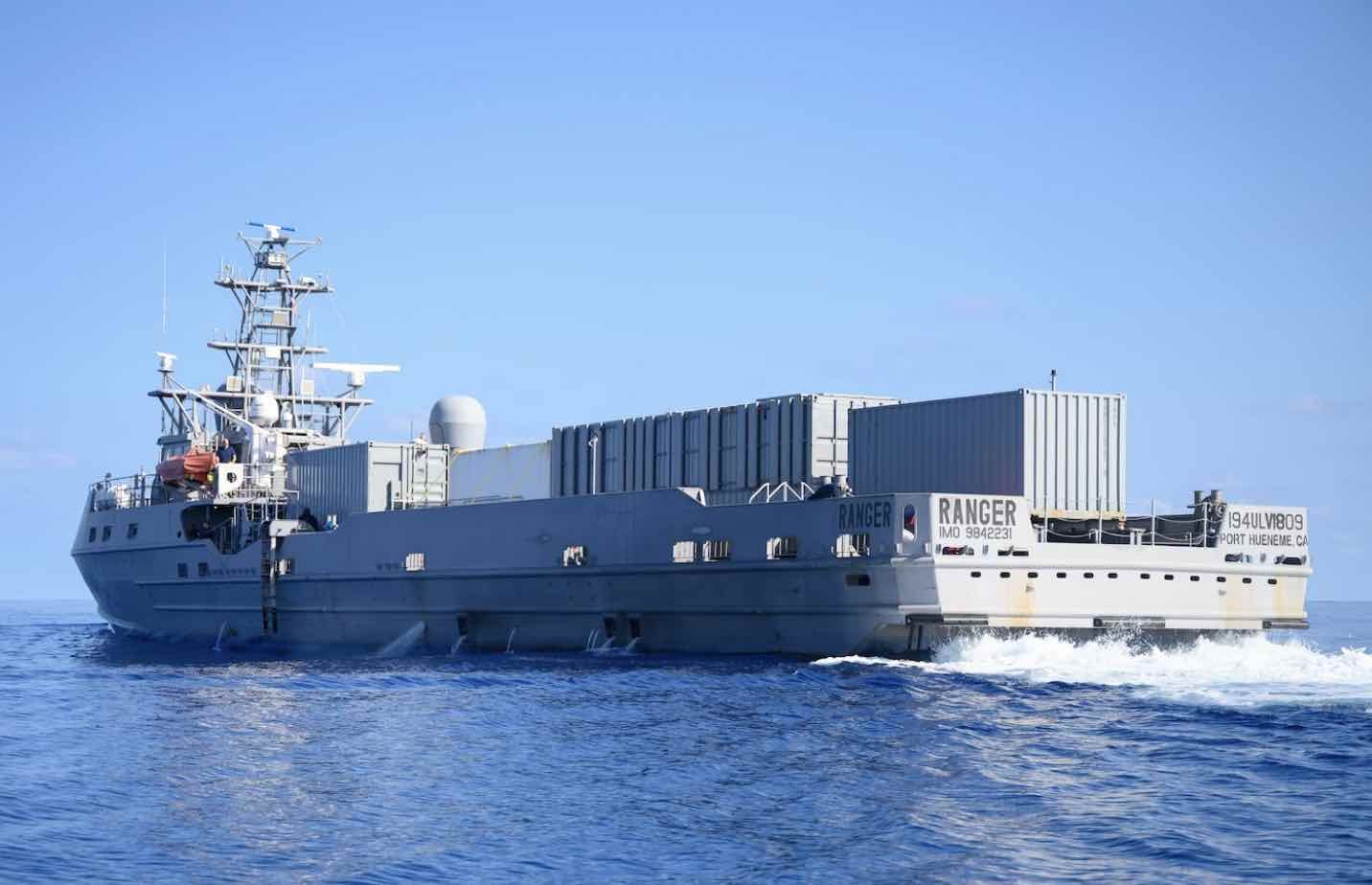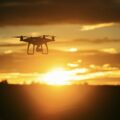

Welcome to this week’s installment of The Intelligence Brief… on Monday, the U.S. Navy made history with the first Pacific crossing of a pair of its drone ships, as the two vessels were dispatched to Japan amidst rising tensions with China. This week, we’ll be analyzing 1) the arrival of the U.S. surface drones in Japan, 2) how the U.S. Navy is looking to leverage drone technologies across multiple domains, and 3) what the current role of autonomous systems are in U.S. Naval operations and beyond.
Quote of the Week
“We’ll counter the [People’s Liberation Army’s] mass with mass of our own, but ours will be harder to plan for, harder to hit, and harder to beat.”
– Kathleen Hicks, Deputy Secretary of Defense
Latest News: In recent coverage from The Debrief, the world’s most powerful X-ray laser has successfully produced its first beams after receiving a significant upgrade, and elsewhere, Courtney Bower and Elizabeth Redmonds ask whether some UAP sightings could represent stealth extraterrestrial AI probes? You can find all our latest headlines at the end of this week’s newsletter.
Podcasts: In podcasts from The Debrief, over on The Micah Hanks Program, we dive into analysis of the results of NASA’s UAP Independent Study Team report. Meanwhile, this week on The Debrief Weekly Report, MJ and Stephanie discuss whether AI can make art, and Europe’s growing problem with Fire Ants. You can subscribe to all of The Debrief’s podcasts, including audio editions of Rebelliously Curious, by heading over to our Podcasts Page.
Video News: On the latest episode of Rebelliously Curious, Jim Smith, Professor of Environmental Science in the School of the Environment, Geography, and Geosciences at the University of Portsmouth, joins Chrissy Newton to discuss the science and what we should know about radioactive wastewater. Also, check out the latest episode of Ask Dr. Chance where Dr. Glenn answers questions about climate change. You can get other great content from The Debrief on our official YouTube Channel.
Now, it’s time to turn our attention toward what has been happening in the Pacific, and how the U.S. Navy and other Indo-Pacific navies are employing autonomous platforms as tensions continue to rise with Beijing.
U.S. Navy Unmanned Vessels Become First to Cross the Pacific
This week, a pair of U.S. Navy prototype unmanned surface vessels were sent across Pacific waters amidst growing tensions between Beijing and Western nations and rising concerns about Chinese expansion.
On Monday, the USV Mariner and the LUSV Ranger, two drone boats that have been nicknamed the U.S. Navy’s “ghost fleet,” arrived at Yokosuka Naval Base, Japan, home of the U.S. Seventh Fleet, The Japan Times reported.


The drones were dispatched as part of a long-range deployment that has now been in the works for several weeks, since the vessels left their home port in Southern California last month. Although designed for autonomous action, small crews were carried aboard the prototype vessels as their arrival at Yokosuka marked the first Pacific crossing of autonomous surface vessels of their kind.
The U.S. Navy’s Drone Wars
Monday’s Pacific crossing of Mariner and Ranger is only the latest development in a broader effort by the U.S. Navy to expand its multidomain capabilities with the implementation of unmanned platforms.
Last October, budget documents revealed that the U.S. Navy was advancing with its development of drone swarm technologies that will comprise thousands of small drones capable of overpowering anti-aircraft defenses.
The increased focus on unmanned platforms follows demonstrations of their capabilities during the conflict in Ukraine, where relatively simple drone technologies, often available on the consumer level, have been successfully used in everything from attacks on armored vehicles to guided artillery fire and reconnaissance.
Building on such capabilities, the U.S. Navy hopes to be able to successfully leverage new methods of controlling entire swarms of drones with a single unit.
Zachary Kallenborn, a policy fellow at the Schar School of Policy and Government at George Mason University, told MIT News that drone swarms controlled in such a way “can be conceivably applied to virtually any mission,” possessing a wide range of potential uses across multiple platforms.
Given their range of uses, last month the Pentagon also announced its new Replicator program, which aims to deploy a network of cost-effective autonomous systems within the next 24 months.
Drones by Air and by Sea
Currently, the U.S. Navy is in possession of five prototype unmanned surface vessels, or USVs, which operate under its Unmanned Surface Vessel Division One. Capable of leveraging both surface and subsurface combat capabilities, Mariner and Ranger are also equipped for reconnaissance and surveillance, amidst a range of other capabilities.
Previously, the two USVs were incorporated as part of a series of training operations in the Pacific, assisting the Carl Vinson Carrier Strike Group in exercises aimed at helping optimize its maritime domain awareness.


Similarly, the U.S. Navy also employed both air and surface drones during the UNITAS 2023 naval exercises that occurred earlier this year in Latin America. Currently, along with Mariner and Ranger, the Navy has additional drone ships that include the Sea Hunter, a 132-foot trimaran capable of speeds close to 27 knots, as well as its sister vessel the Seahawk.
Presently, the Navy’s FY2024 budget includes funding for the development of additional Large Unmanned Surface Vessels (LUSVs), with the first vessel of this kind likely to be ready for deployment by 2025 and at a cost of $315 million, with an additional pair of LUSVs expected to be completed by 2026.
The use of unmanned systems, particularly for Indo-Pacific naval deployments, offer numerous benefits that include cost reductions when compared with the use of traditional manned vessels, in addition to their safe use in risk-prone circumstances where human casualties are more likely to occur.
Currently, several other navies have begun to adopt unmanned vehicles as well, including both China’s People’s Liberation Army Navy and Japan’s Maritime Self-Defense Force. The U.S. currently possesses an operational advantage with its drone technologies due in part to the significant challenges presented by China’s growing military capabilities.
That concludes this week’s installment of The Intelligence Brief. You can read past editions of The Intelligence Brief at our website, or if you found this installment online, don’t forget to subscribe and get future email editions from us here. Also, if you have a tip or other information you’d like to send along directly to me, you can email me at micah [@] thedebrief [dot] org, or Tweet at me @MicahHanks.


Here are the top stories we’re covering right now…
- What’s Hiding at the Moon’s South Pole? Lunar Orbiting Cameras Unveil Mysterious Region in Unprecedented Detail
Bathed in constant darkness at the Moon’s South Pole, the enigmatic Shackleton crater has remained a subject of intense scientific interest—and controversy—for decades.
- Researchers Studying the Quantum Realm Observe Alice in Wonderland-Style Mirror Universe for First Time
Researchers studying the quantum realm have seen evidence of a mirror universe where everything is the opposite of the real universe.
- World’s Most Powerful X-Ray Laser Produces Its First Beam, Heralding a “New Era of Science”
The world’s most powerful X-ray laser has successfully produced its first beams after receiving a significant upgrade at its California facility.
- Stealth Extraterrestrial AI Probes: Reconsidering the UAP Mystery
Could some UAP sightings represent stealth extraterrestrial AI probes? A pair of Cornell regional science students explore this hypothetical solution to the UAP Mystery.
- When You Experience Stress, Your Brain’s Cannabinoid System Gets You Stoned
New research reveals that the brain’s cannabinoid system reacts to stress by releasing its own THC like substance to get you stoned.
- Mysterious Liquid Lunar Discovery May Have a Surprising Source… and It’s Coming from Earth’s Magnetotail
New research has revealed plasma sheet electrons from Earth’s magnetotail as a potential source for the formation of water on the Moon.
- Look: New Mapping Effort Reveals Where “Plasma Rains” Are Bombarding This Nearby Planet
A recent study has revealed new clues about the effects of plasma precipitation from solar winds on the surface of Mercury.
- Baffling: $78 Million F-35B Stealth Fighter Reported Missing After Mysterious In-Flight ‘Mishap’
U.S. military officials continue searching for an F-35B Lightning II stealth fighter jet that went missing under mysterious circumstances on Sunday.
- Can AI Actually Create Art? This week on The Debrief Weekly Report…
On today’s episode, we discuss a new study that says music can unlock our creativity while we lucid dream, Europe’s new war with Fire Ants, and how a ragtag group of AI artists are taking their concerns to Congress, demanding a seat at the policymaking table surrounding artificial intelligence. You can listen to the episode on Apple Podcasts, Spotify, by killing fire ants, or simply download it wherever you get your podcasts. Please make sure to click ‘Subscribe’ and Rate […]
- Did NASA’s James Webb Telescope Just Make The Astonishing First Discovery of Alien Life on Exoplanet K2-18b?
Is there life beyond Earth? The James Webb Telescope has spotted tantalizing potential signs of alien life on exoplanet K2-18b.
- WiFi Signals May Soon Be Used to Watch You
New research shows WiFi signals that can read through walls, presenting profound implications for the future of communication and security.
- NASA’s UAP Independent Study Team Publishes Its Findings, as the Agency Appoints a New NASA Director of UAP Research
A report by NASA’s UAP Independent Study Team has called for better data, and reveals the appointment of a new NASA Director of UAP Research.
- NASA’s Unidentified Anomalous Phenomena Report: Key Takeaways
Welcome to this week’s installment of The Intelligence Brief… the results of an assessment by NASA’s Unidentified Anomalous Phenomena (UAP) Independent Study Team are in. In our analysis, we’ll be looking at 1) what the study set out to achieve, 2) what the results of the team’s study entailed, and 3) how the NASA team’s recommendations could improve our understanding of UAP going forward. Quote of the Week “Out beyond our world there are, elsewhere, other assemblages of matter making […]
- Mysterious ‘Force Gun’ May Be China’s Most Frightening Space Weapon
Chinese researchers say they have developed a “force gun” that can manipulate objects from a distance like a Star Wars Jedi using the Force.
- Hunt for the Mystery Spheres
This week on The Micah Hanks Program, we look at the history involving sightings of strange metallic or translucent spherical UAP.
- Something Odd Has Been Detected on the Moon… and It’s Coming from the Apollo 17 Lunar Lander Base
Scientists studying the sources of unusual signals detected on the Moon have traced them back to the lunar lander base from one of NASA’s historic Apollo missions.
